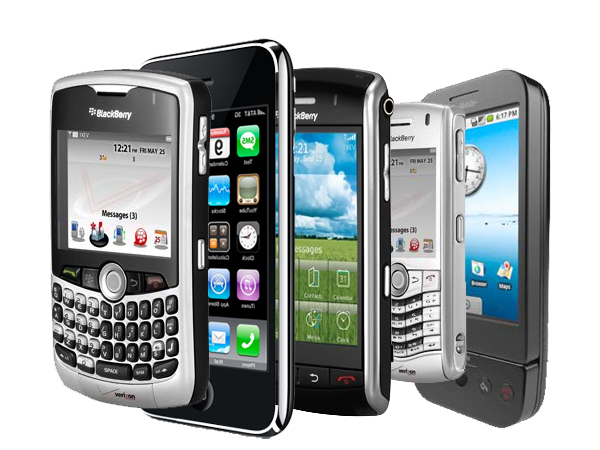Smartphones of today
The world of cellphones is expanding with new models being launched almost every day. Back in 1973, when the first cellphone was made; it was a bulky object with not many functions other than that of making and receiving calls. Now, cellphones have become like mini computers with multipurpose cameras, capable of storing substantial amounts of data, recording videos and music, linking to the internet, playing games and a whole host of other features. These phones fall under the category of smartphones owing to their intelligent capabilities. So essential have they become to consumers that the third quarter of the year 2011 saw 115 million units of these phones being sold worldwide.

Considering the number of applications smartphones support and the various features they present to consumers, battery life is a major issue. Any battery operated device that functions on a very intelligent level is bound to consume a lot of power. This is why smartphones have relatively short battery lives than their simpler counterparts, posing a problem to consumers and researchers alike. Currently, smartphones run on lithium ion batteries but the increasing power requirements of smartphones is outrunning the actual power capacity of these batteries. Such phones usually have to be charged every day and if you’re in a place that has no power source, it can become a huge problem.
Need for change
Conventional power is the only way to charge smartphones and, since we’re living in a world that’s going through an energy crisis,automatically rechargeable led lights , we can’t afford to waste too much power on electronic devices. If we could develop self sufficient smartphones that could charge themselves, we would no longer have to worry about battery drain and other related problems. Luckily, a segment of forward thinking individuals has found ways to address this problem. Their methods may not have produced phones that have been mass produced, but they’ve given us an insight into how we can go about manufacturing smartphones that are self sustaining.
Future perfect
1. Solar cells in OLED Screen

The developer: University of Cambridge
A team at the University of Cambridge has devised a way by which smartphones won’t need charging every so often. Most smartphones have displays made up of OLEDs. About 36 percent of light emitted by an OLED screen is projected outwards while the remaining 64 percent scatters through the edges. The Cambridge team has found a way to capture this scattered light by equipping OLED displays with solar cells made from a thin film of hydrogenated amorphous silicon. Since the cells are also placed on the edges of the display, they can capture scattered light and send it back to the display. To offset any fluctuation caused by the solar cells that could damage the phone’s battery, the team installed a thin filmed transistor circuit. A thin filmed super capacitor was also placed for intermediate energy storage. While their prototype doesn’t guarantee a charge free smartphone, it does ensure that power isn’t wasted and users won’t have to charge their smartphones every other day.
2. Phones that never need recharging

The developer: Nokia
Cellphone manufacturing giant, Nokia, has announced that it’s in the process of developing a smartphone prototype that will never need to be charged from a conventional power source. Instead, the device will convert ambient radio waves into electricity for powering the phone’s battery. According to a researcher at Nokia Research Center, the radio waves can be emitted from any device such as a TV mast, another cellphone or Wi-Fi transmitters. The prototype is capable of capturing about 50mW of power. However, there are still some kinks to be worked out as harnessing that amount of electricity means that a person would need a powerful source.
3. Conversation powered phones

The developer: Korean scientists
This may seem pretty farfetched but Korean scientists have proposed to build a smartphone prototype that will convert sound waves into electricity using zinc oxide, an ingredient found in the humble calamine lotion. The scientists created a mass of nanowires placed between two electrodes. The set up was then subjected to sound waves of about 100 decibels. A mild electric current of 50 millivolts was produced, not exactly enough to power a smartphone which requires a few volts radiation free fluorescent lights . But, the technology offers scope for sound waves to power a smartphone and the scientists have resolved to improve their research and technology.
4. Self charging phones

The developer: UCLA Team
A UCLA team has developed an organic photovoltaic polarizer which will be capable of converting light emitted from the backlight of a smartphone into electricity. Ordinarily, a phone’s backlight switches on when the phone is being used. The light is transmitted via pixels and transistors embedded in the microchip. All in all, just about 25 percent of this light reaches the users eyes while the remaining is absorbed in polarizing sheets. The UCLA team hopes that their photovoltaic polarizer will convert this absorbed light into electricity which will then be used to charge a smartphone’s battery. Moreover, the polarizer will also absorb light from outside sources like the sun and indoor lighting.
5. Solar powered iPhone

The developer: Apple
The iPhone is set to get a makeover if Apple has its way. In keeping with growing concerns about energy depletion and short battery life, the company has announced a patent that will see the use of solar cells being used for its very popular smartphone, the iPhone. Apple has said that the cells will be installed beneath the display’s surface to harness solar energy which will power its battery. iPhone users needn’t worry about the exterior appearance of their beloved smartphone as the solar cells will be neatly hidden.
Benefits
Self sufficient
The smartphones listed above will no longer have to depend solely on conventional power for charging as they’ll have the capability of charging themselves.
Power source
With solar energy entering the picture, we will see a marked reduction in the use of conventional power, saving us a large amount of electricity which can be put to better use.
Energy efficient
No energy is wasted with these smartphones as they capture scattered energy and reuse it to power themselves.




